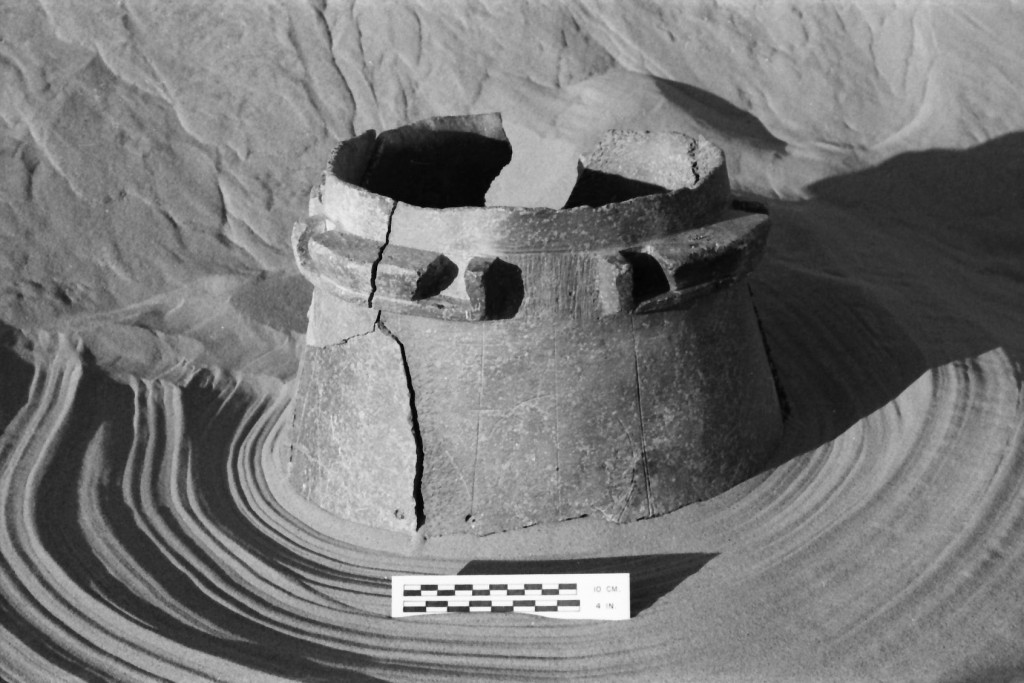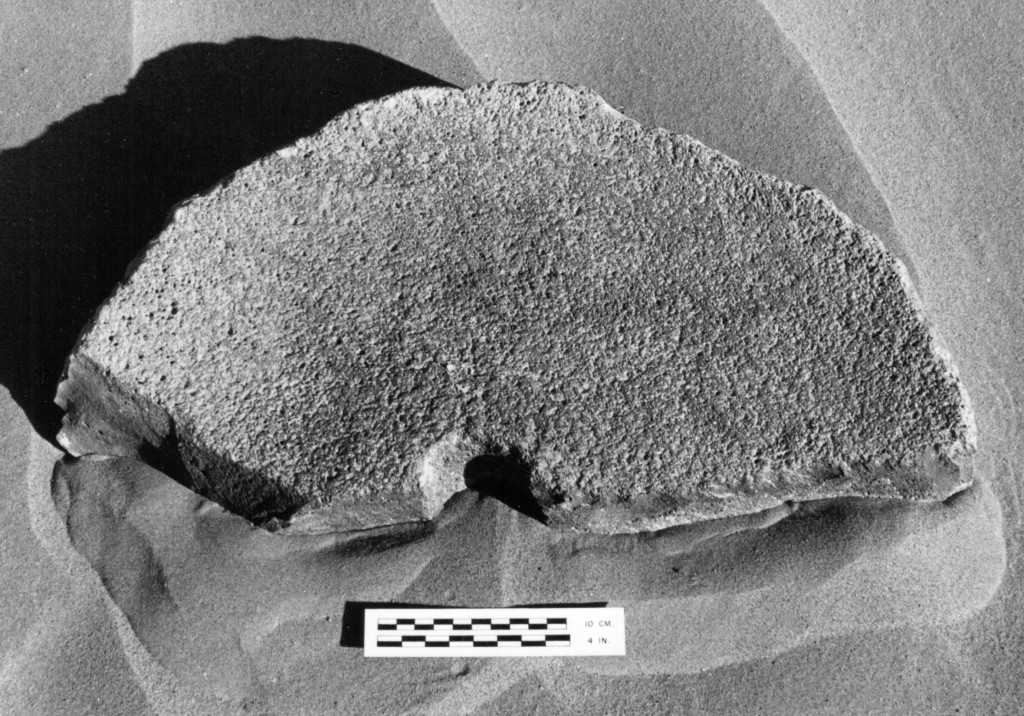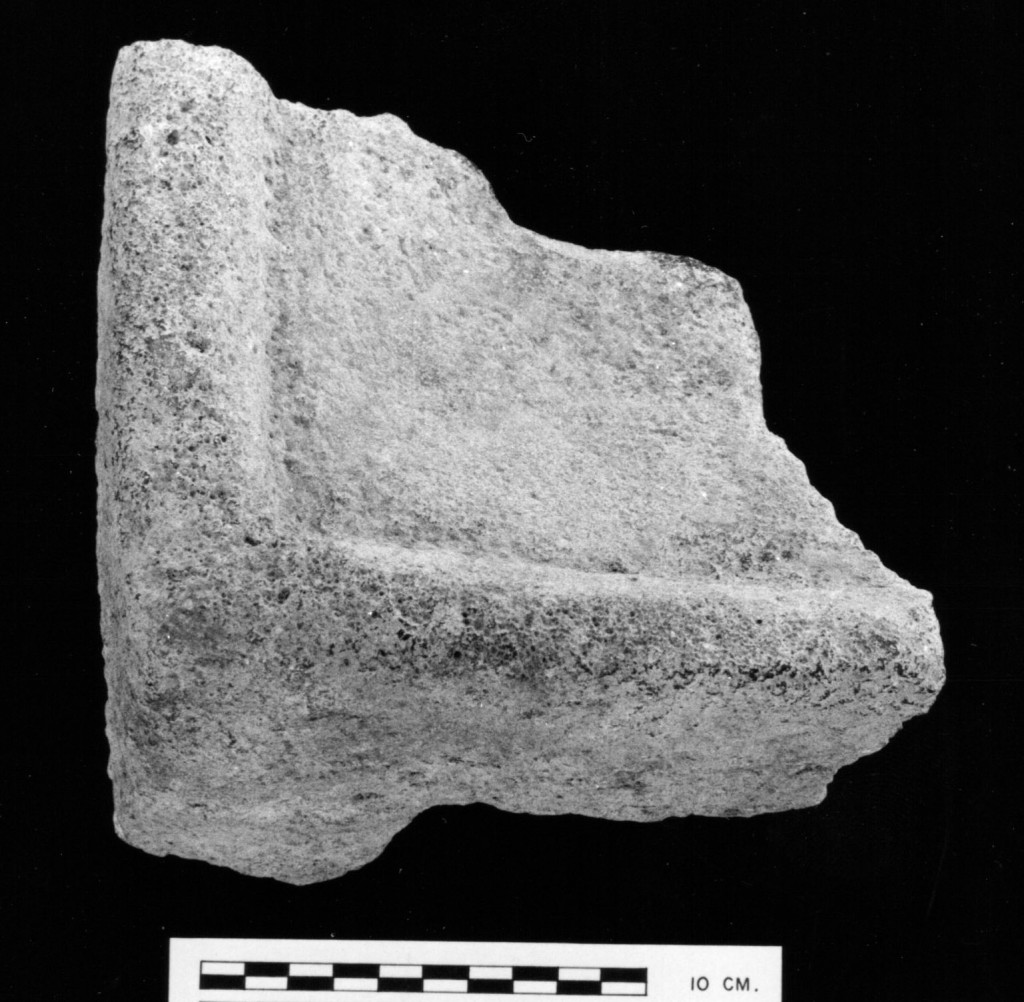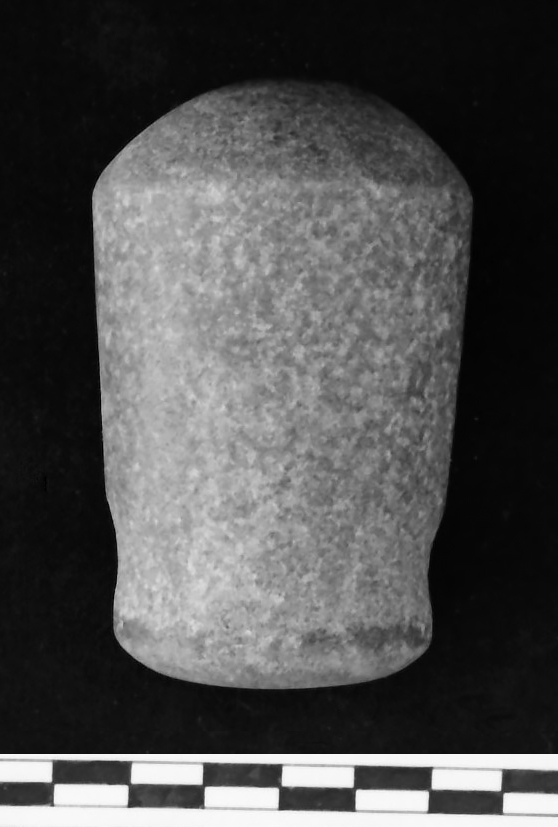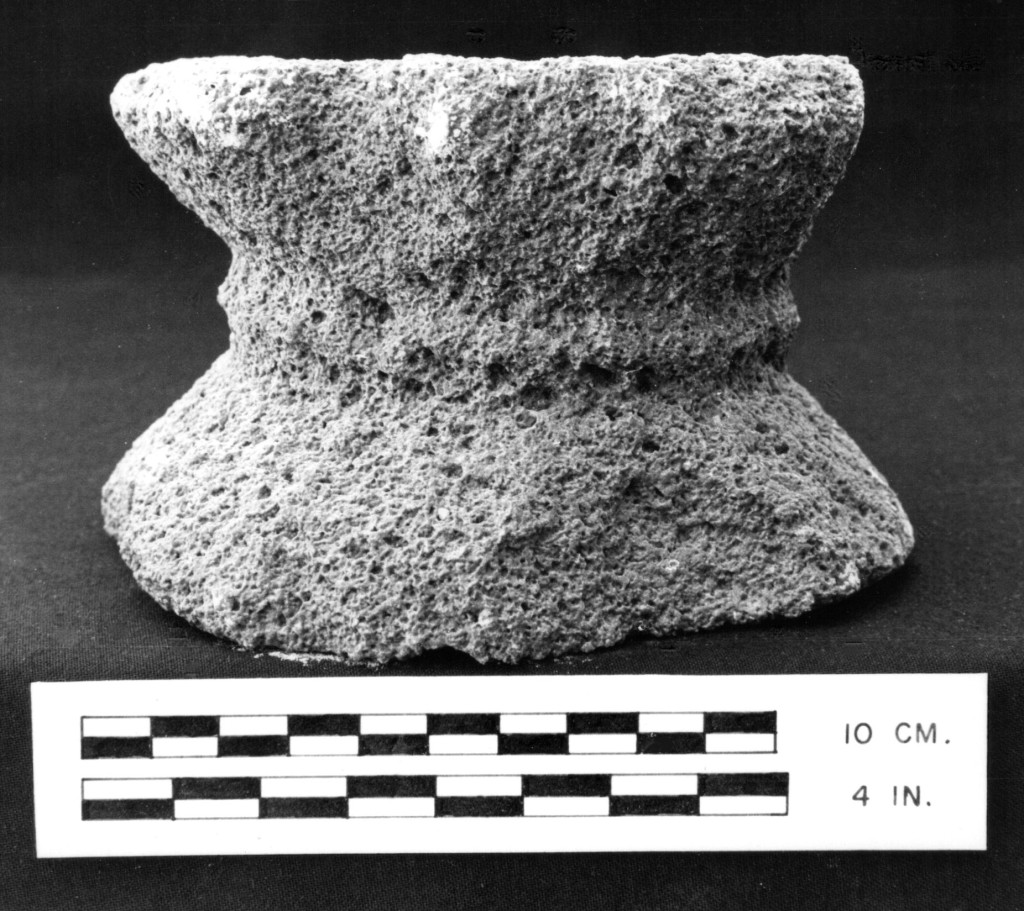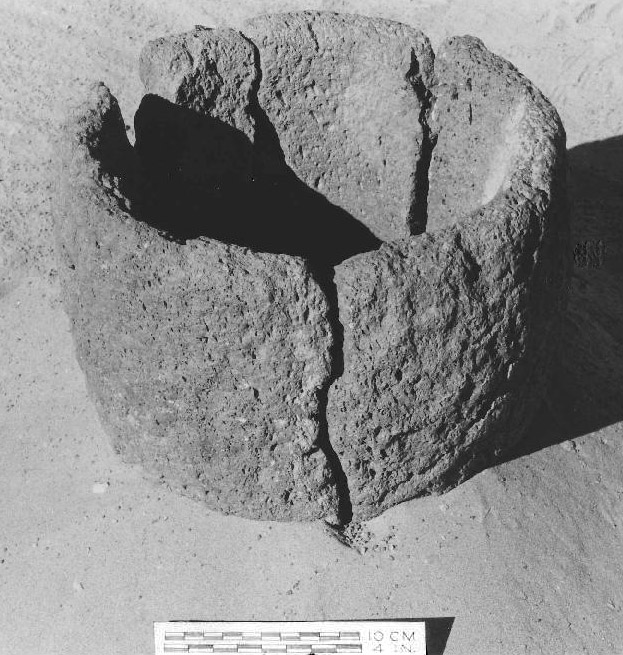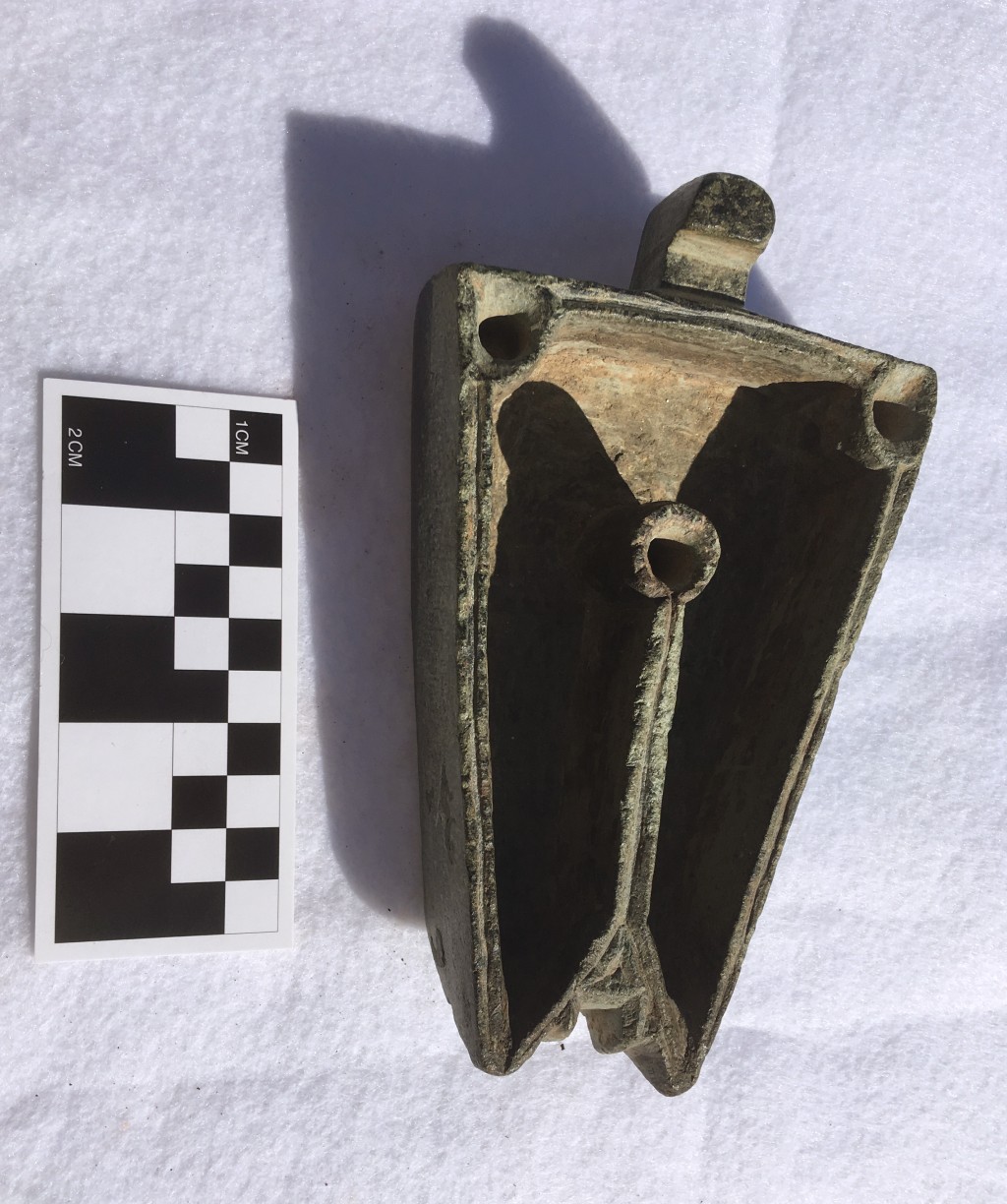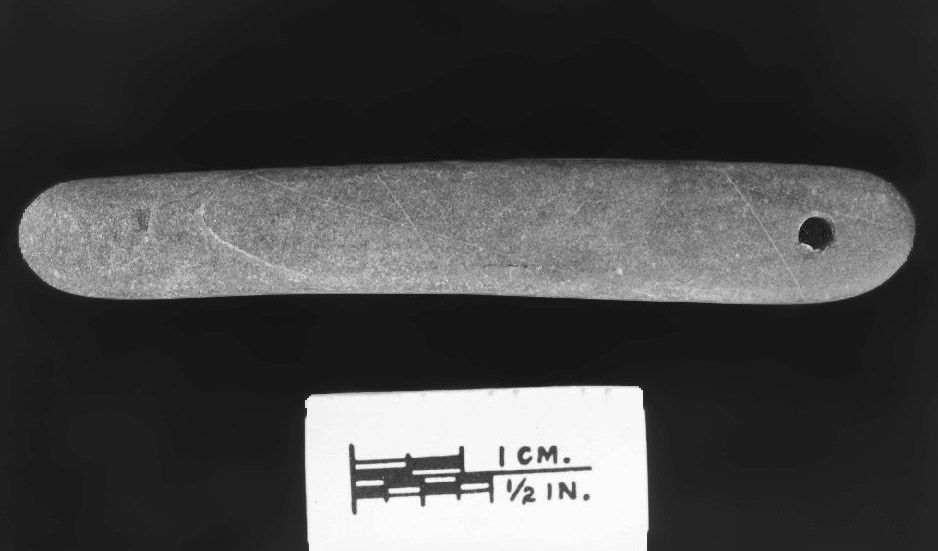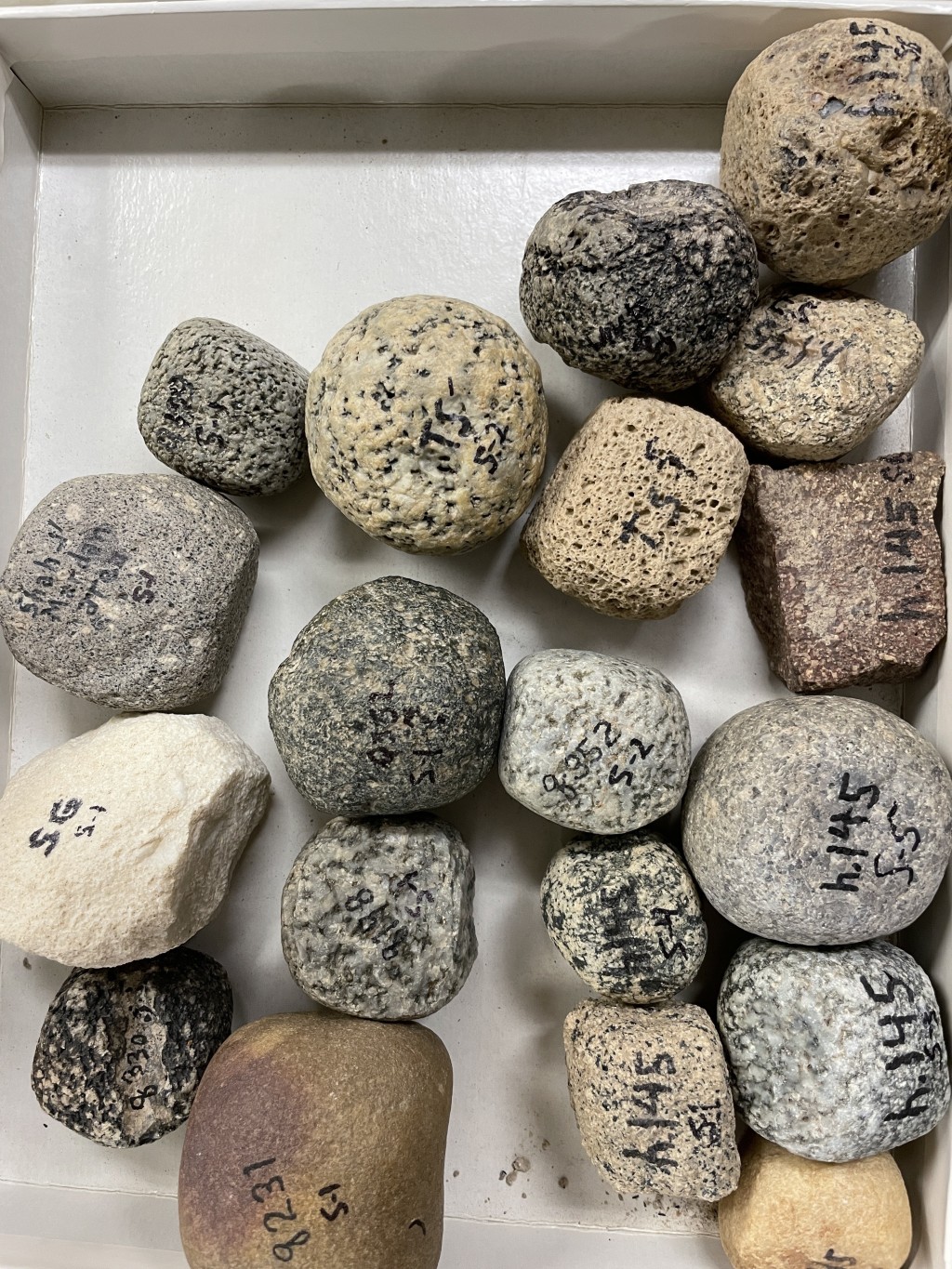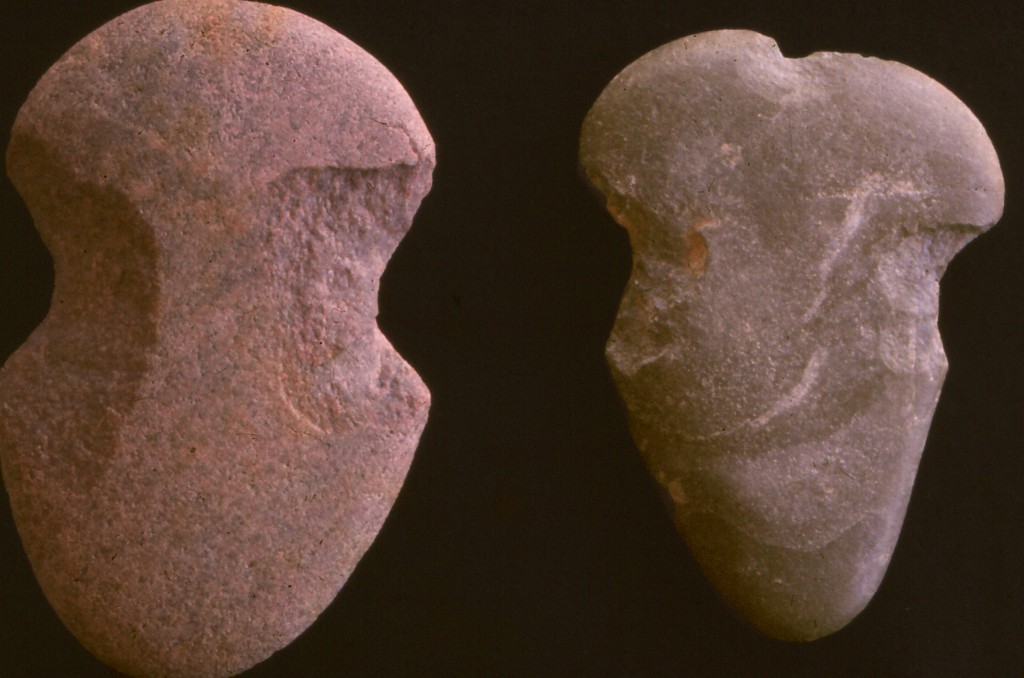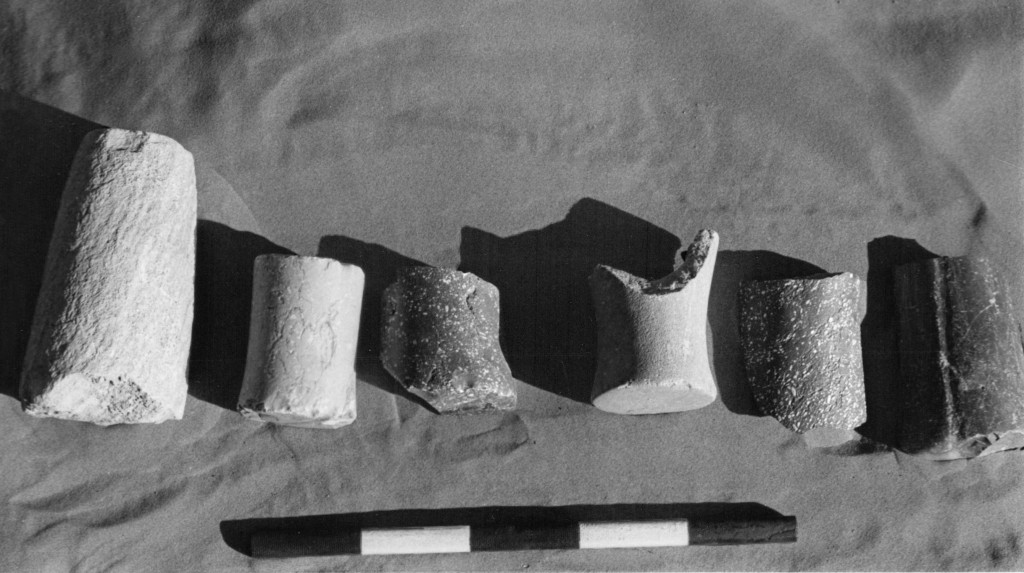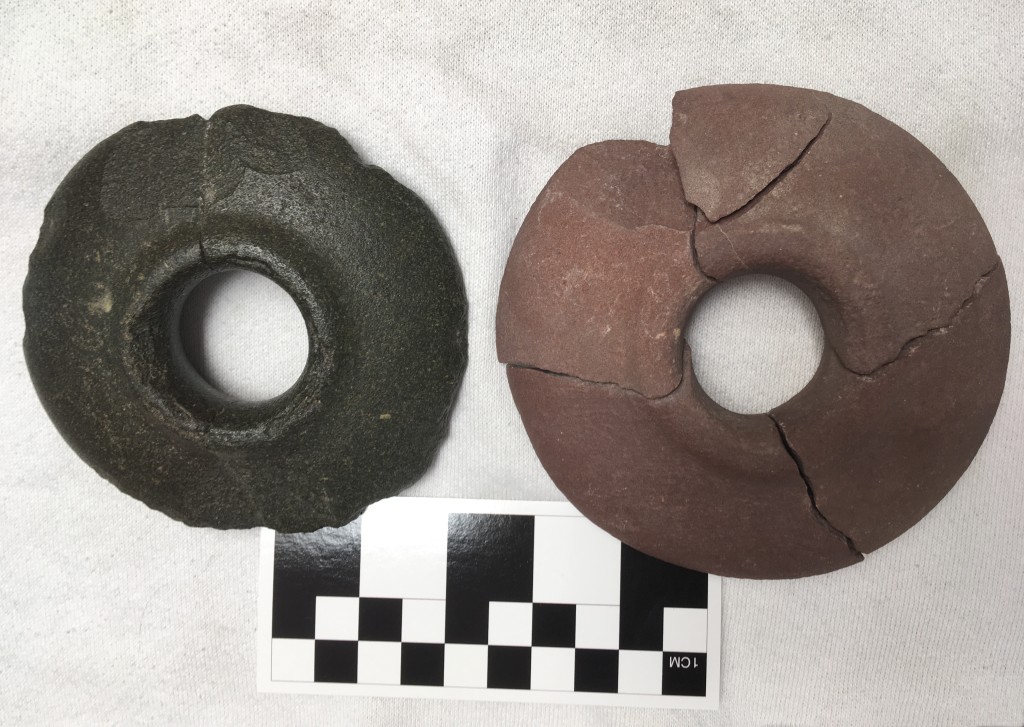Stone Objects
Some stone objects found were plainly utilitarian, others more decorative. Most were made of local stone, steatite from the hills to the south, basalt from volcanic pillows like Kuh-i Khwaja, and travertine from the mountains at the foot of Koh-i Malik Siah on the Pakistani border. Other objects came from further away, many in the Baluch mountains to the south. The abandonment of the Sar-o-Tar region after the 15th century meant that many everyday objects were left in the ruins of those houses including large storage vessels, millstones, tables, mortars, pestles, and a well-made steatite lamp from Qala 214.5. Limestone, basalt, and sometimes fired ceramic pulleys were found at many of our Plain of Jars sites. Common at some of the Partho-Sasanian sites were stone cubes, many of granite, that we assume were used as weights, though there is little consistency in their size or weight. Several whetstones were collected by the project along with flat river stones thinned at their sides, which may have been loom weights. Among the more exotic objects were the miniature stone columns and weights with handles known from other sites in Iran and Central Asia as coming from the early 2nd millennium, mostly found at Godar-i Shah. Two finely-carved stone discs found at our Early Iron Age sites have few known parallels and one, of purple quartzite, came from a distance away. While most of the Greek-style decorative elements found in Sistan were made of fired ceramic, a few were made of marble.
